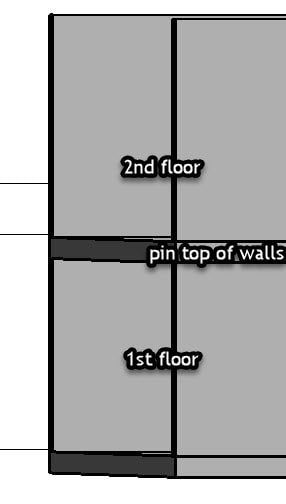rte4563
Mechanical
- Sep 28, 2022
- 40
I need to check the capacity of the deck and walls in this building. My senior supervisor told me I can just put pinned at top of the walls from the 1st floor. So I only need to model the 2nd floor deck and walls since everything below has enough capacity. I wonder what happens then in my FEA model when I only model deck and walls on second floor - I get increased moment in the walls on 2nd floor? Im guessing this is a conservative way of doing it when it comes to 2nd floor?


